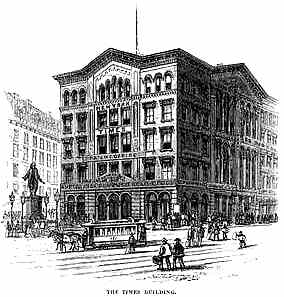 |
 |
| NEW-YORK, TUESDAY, SEPTEMBER 5, 1882 |
 |
 |
| The New York Times building as shown in the Harper's New Monthly Magazine, Dec 1871. (source) |
 |
 |
| NEW-YORK, TUESDAY, SEPTEMBER 5, 1882 |
 |
 |
| The New York Times building as shown in the Harper's New Monthly Magazine, Dec 1871. (source) |